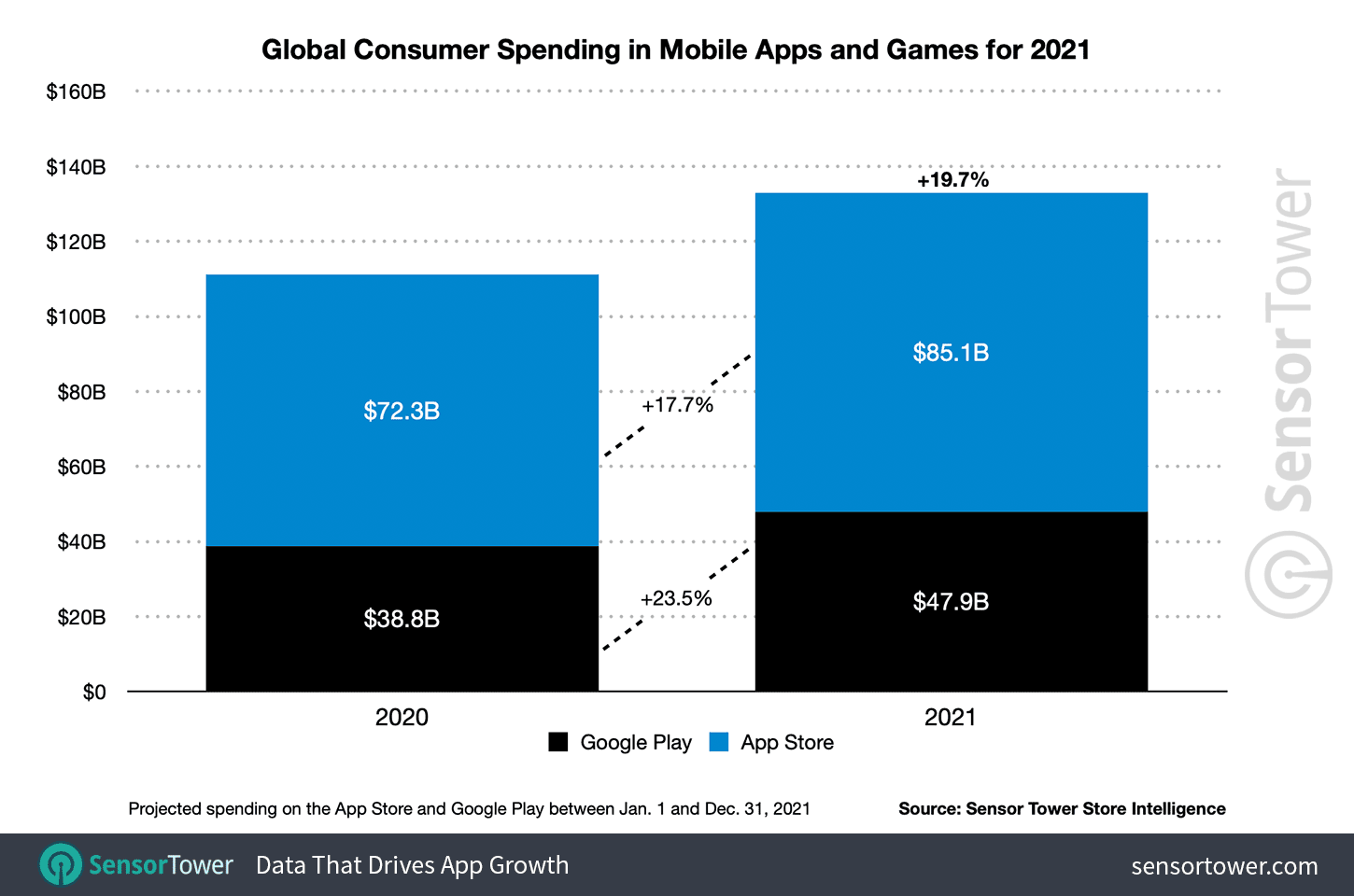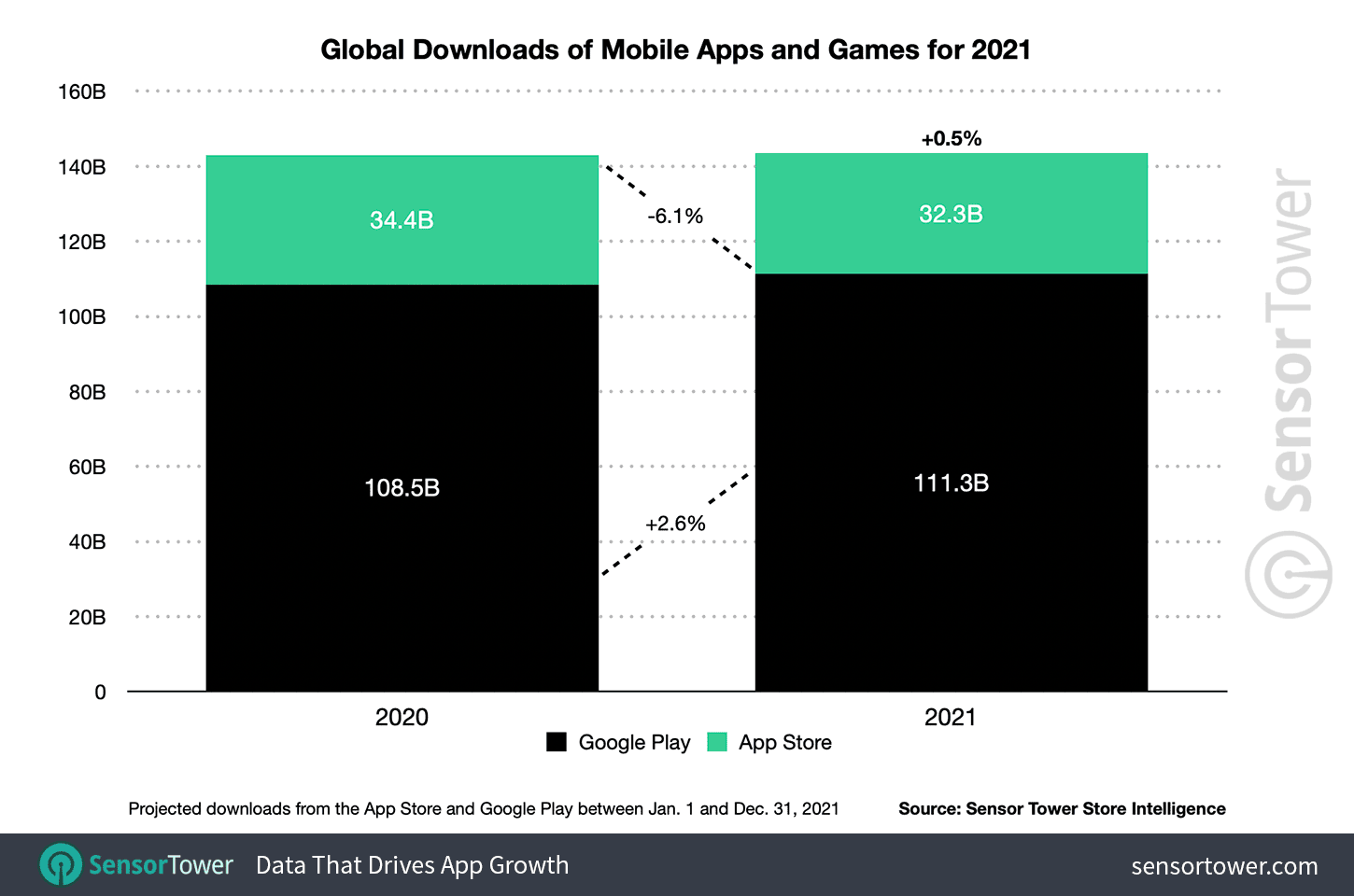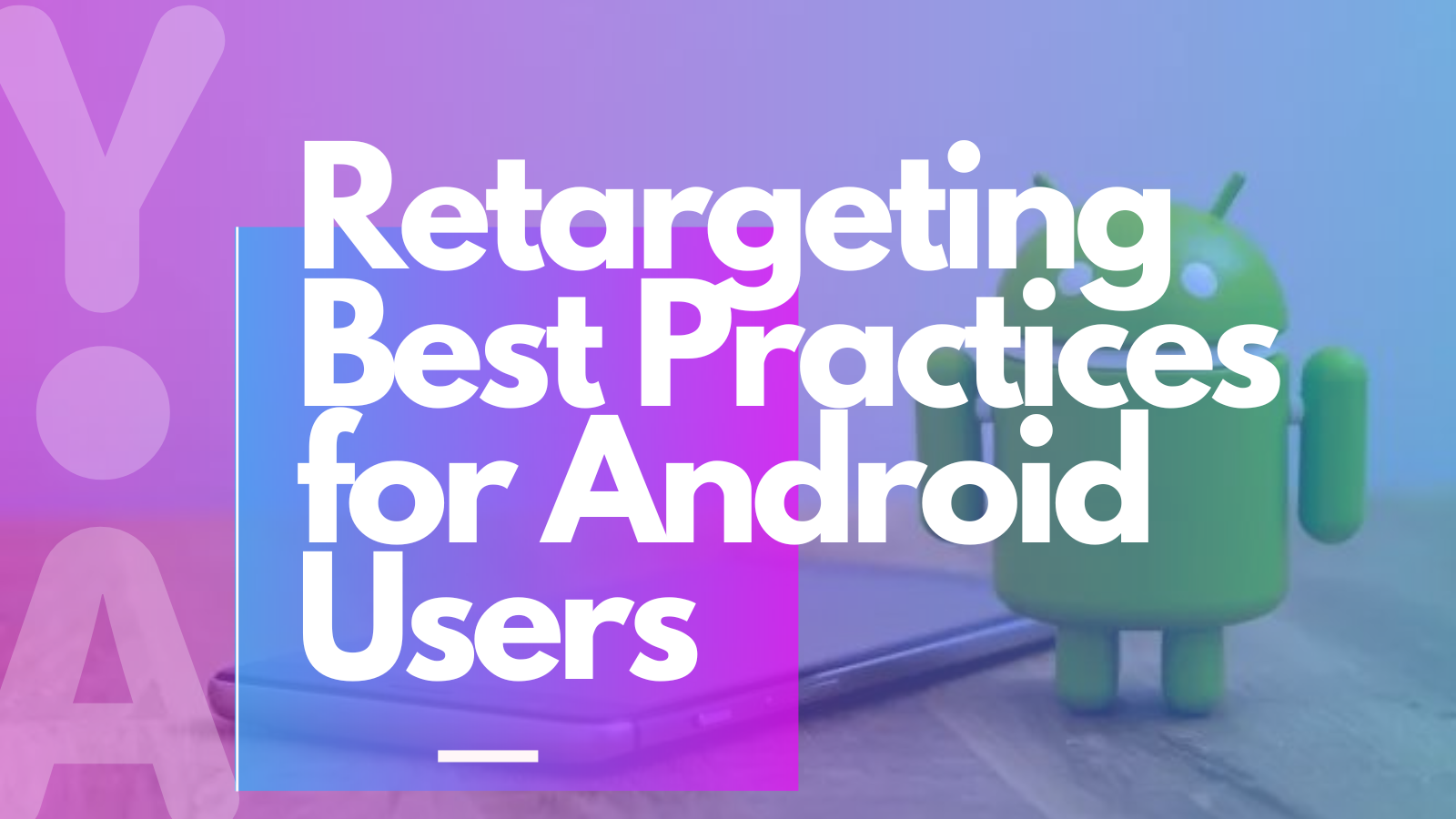Apple’s App Tracking Transparency (ATT) framework with iOS14.5 changed marketers’ approach to app advertising for users on iOS — and, also Android users. From a consumer perspective, the enhanced data privacy was welcome. From a marketing perspective, iOS 14.5 complicated advertising on iOS and drove CPIs upward.
The result?
There’s been a notable shift of ad spend to Android as marketers take advantage of its enhanced data granularity post IDFA. In fact, in 2021, non-organic installs (NOIs) on Android rose 40% year-over-year. Specifically, on gaming apps NOIs leapt an impressive 50% while on non-gaming, 36%. Of course, with the rise in demand for Android users, prices have also spiked. Android’s global non-gaming CPI in 2021 rose almost 20%. At the same time, global gaming CPIs on Android fell 11%, indicating opportunities for game marketers to spend competitively on acquiring and retaining players on Android.
Below, read our insights for successfully retargeting Android users post-IDFA.
Android Users: Key Stats
According to Business of Apps, Android is the most widely-used operating system in the world with over 2.8 billion active users spanning 190 countries. This represents 75% of total global OS market share. Outside of key markets like the U.S., Android dominates by a wide margin over iOS. In Brazil, India, Indonesia, Turkey and Vietnam Android holds over 85% market share. On the other hand, in the U.S, Android trails iOS market share by almost 20%.
The top Android smartphone manufacturer is South Korea-based, Samsung, followed by Chinese makers, Huawei and Xiaomi.
Android: The Most-Used Smartphone in the World
One major reason why Android users dominate globally but make up a minority in the U.S. is price. In many countries outside of the U.S., people have far less disposable income. As Android phones, on average, are much less expensive than iPhones (on Amazon, you can purchase an Android phone for as little as $39. On the other hand, a pre-owned iPhone is a minimum $100), it would make sense then that this OS dominates on a global scale.
Other key points about Android’s market share globally:
- The Google Play Store boasts more apps than the App Store. While Google Play offers Android users 3.5 million apps to choose from, the App Store offers roughly 2.2 million.
- More non-native English speakers use Android than iOS.
- Android holds a particularly large market share in Asia as a whole. This makes sense as the continent of Asia boasts a larger population of individuals who live in extreme poverty compared to the U.S.
- Interestingly, while Android dominates in Asia overall, in certain countries, iOS has maintained its hold. For example, in Japan, iOS holds 62.69% market share. As Japan boasts a higher per capita GDP than other Asian countries, this further indicates the correlation between Android usage and price.
In-App Spending & Downloads on Android
While there are more Android users in the world, they tend to make fewer in-app purchases than iOS users. In 2021, global spending on the App Store reached just over $85 billion while on the Google Play Store, just under $48 billion. With that being said, spending on Android grew at a faster clip than spending on iOS: 23.5% vs. 15.5%.

Source: Sensor Tower
Understandably, since there are more Android users — as well as apps offered in the Google Play Store — Android users install more apps, on average, than iOS users. In 2021, Android users installed a whopping 111.3 billion apps— versus iOS users, only 32.3 billion.

Source: Sensor Tower
Retargeting Android Users: Best Practices
What we can learn from the data above is that Android users tend to be price-conscious and located outside the U.S. With that said, here are three best practices for successfully retargeting users on Android.
1. Localization
Localizing the language and content of your ads to fit a user’s experience is a key strategy to achieving higher engagement on your retargeting campaigns. According to a test done by language localization agency, Kwintessential, localizing ad descriptions achieved a higher CTR and conversion rate. While English ads served to users in Germany, France and Spain achieved a 2.35% CTR and a 7.47% conversion rate; localized ads achieved a 3.34% CTR and 9.08% conversion rate. Overall, CTRs for the local language ads were 42% higher than English versions, and conversion rates were 22% higher.
As many Android users are not native English speakers, set up your retargeting campaigns for maximum success by translating ad copy into the local language. Preferably, this translation should be done by native speakers for optimal results.
2. ‘Try before you buy’ conversion flows
It’s clear Android users are more likely to be price conscious than iOS users. To better fit their needs, enhance your conversion flow with “try-before-you-buy” promotions. If your app monetizes under a subscription model, this might come in the form of offering a 7-day free trial.
If you’re a game app, you could give Android players a free power-up at a key level when users usually churn for proactive retention. By giving users full access to your app’s offerings for a limited time, they’ll be more incentivized to make a purchase to maintain their access once it’s taken away.
3. Highly Engaging Creatives
Since the Google Play Store offers a wider variety of apps, it’s important to stand out from the crowd. Promote your app with highly-engaging ads and a creative strategy that entices — rather than annoys — your users.
Create ads that are mobile-first and eye-catching by using less text and copy that creates a sense of urgency like “limited time” and “offer ends soon”. Resize your ads for different channels, whether for paid social campaigns on Facebook or Instagram or in-app campaigns run by specialized DSPs. Finally, find ways to incorporate video ads into your mix. Video is the highest-performing ad format across categories. To understand the value of your video ads across the multichannel marketing landscape, enable view-through attribution when you set up your retargeting campaigns.
Takeaways
IOS14.5 changed marketers’ approach to app advertising on iOS — and, also on Android. In 2021, non-oganic Android installs rose 40%. While global non-gaming CPIs also rose to meet this rise in demand (+20%), gaming CPIs fell 11%. This indicates opportunities for game marketers to spend competitively on acquiring and retaining players on Android.
- Android is the most widely-used operating system in the world, maintaining a 75% majority share of the global OS market.
- While Android users download more apps than iOS users, they spend less in apps overall.
- Android users tend to be price sensitive and based outside of native English-speaking countries.
- To optimize retargeting campaigns on android:
- Translate your ad copy to the local language of the geo in which they’re served.
- Establish “try before you buy” promotions to confront price sensitivity.
- Create highly-engaging ad creatives to stand out from the crowded Google Play Store.

